Recent Fire Damage Posts
3 Topics To Review With Kids Before a Fire
11/27/2024 (Permalink)
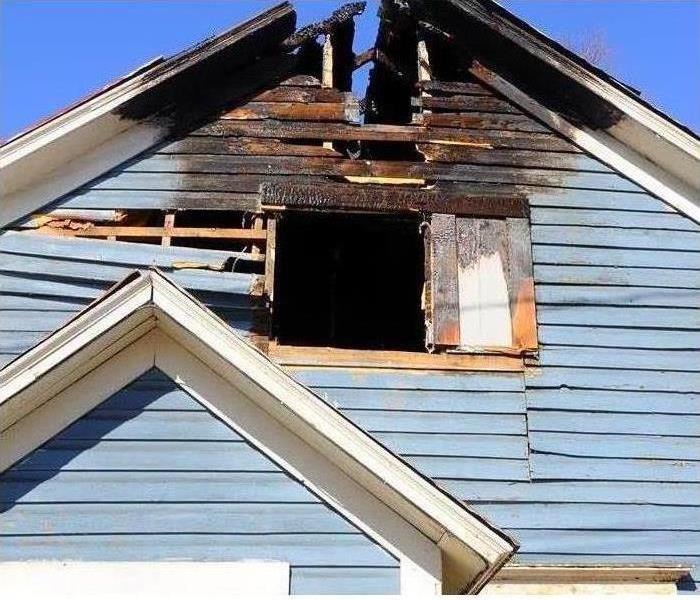 Plan for your family on what to do in case of a fire in your home breaks out
Plan for your family on what to do in case of a fire in your home breaks out
Kids Safety Tips
A top priority for parents in Scarsdale, NY is kids' safety. When developing emergency drills and plans, parents should remember these three often-overlooked concepts. They will especially help children be mentally and physically prepared for an emergency.
1. Visit a Firefighter in Full Gear
First, it is a terrific idea for children to visit a fire station in Scarsdale, NY, to see a firefighter in full gear before any emergency, especially a home fire. The basic uniform includes a coat, boots, pants, gloves, and a helmet. People may forget that a mask covers the firefighter’s face and his or her breathing device can sound more like Darth Vader. Children hopefully will feel less anxious if they’ve seen a firefighter’s apparatus before a true emergency.
2. Discuss Usage of the Fire Escape
The second item to discuss regarding kids' safety is how children actually use a fire escape if they are above the first level of a home or apartment. Children should practice unlatching and opening windows or doors nearby. They need to understand how to physically climb down the house or building. Every bedroom higher than the primary level should have a fire ladder. All family members should know where to find the ladders, how to set them up, and how to use them. This process can include pushing or kicking a screen to remove it.
3. Explain the Need To Attract Attention
In a truly desperate situation, family members should all understand it’s okay to break a window to get attention from firefighters below. If children have trouble opening a window, teach them how to break the glass in an emergency.
When it comes to fires and kids' safety, drills and discussions are crucial. As children grow and mature, their understanding will expand and actions and responses will vary in any emergency situation. Hence, it’s also important to regularly review and revise your plans for what to do in case of a fire and the necessary work afterward.
Building a Fire-Resistant Home: Types of Construction You Need to Know
11/21/2023 (Permalink)
When it comes to creating a safe and secure home environment, fire-resistant construction should be a top priority. Homes built with fire-resistant materials and designs can withstand wildfires and prevent rapid spread of fire within the property. In this blog, we will discuss the different types of fire-resistant home construction and their benefits to help you make an informed choice for your home.
Masonry Construction
Masonry construction involves using materials such as brick, concrete, or stone for the walls, floors, and roof of a home. These materials have excellent fire resistance due to their non-combustible nature, which can significantly decrease the spread of fire within a structure. They are also highly durable, providing a long-lasting and low-maintenance option for homeowners.
Steel Framing
Using steel framing for home construction offers excellent fire resistance and durability. Steel is non-combustible, making it an ideal material for reducing the spread of fire and increasing structural safety. It is also resistant to pests, mold, and moisture, reducing the risk of long-term damage to the home. In addition, steel framing is an eco-friendly option as it is 100% recyclable.
Exterior Fire-Resistant Treatments
Another option for making homes fire-resistant is by using exterior fire-resistant treatments such as coatings, paints, and sprays. These treatments contain chemical additives that can delay or prevent the spread of flames, providing additional protection to the structure. While these treatments can be applied to traditional materials such as wood or stucco, they are most effective when used in combination with other fire-resistant construction materials.
Insulated Concrete Forms (ICFs)
ICFs are blocks of expanded polystyrene foam reinforced with steel that are stacked and filled with concrete to form walls. This construction method offers excellent fire resistance as the concrete acts as a thermal insulator, reducing the spread of heat and flames. ICFs also provide superior insulation, energy efficiency, and noise reduction, making them a popular choice for homeowners.
Fire-Resistant Roofing
The roof is one of the most vulnerable parts of a home during a wildfire as it can easily catch and spread fire to the rest of the structure. Building a fire-resistant roof using materials such as metal, tile, or asphalt can significantly increase the home's fire safety. These materials are non-flammable, heat-resistant, and can withstand high winds, making them a reliable option for homeowners in high-risk areas.
In conclusion, choosing the right type of fire-resistant construction for your home is crucial to ensure maximum safety from devastating wildfires. Incorporating materials such as masonry, steel, ICFs, and fire-resistant treatments, along with fire-resistant roofing, can significantly decrease the spread of fire and provide a safer living environment. It's important to consult with a professional contractor or fire department to determine the best fire-resistant construction options for your area's climate and wildfire risks. Building a fire-resistant home is an investment in your safety and peace of mind, and it may provide financial benefits through lower insurance premiums and increased property value.
Identifying Fire Risk Factors for Businesses to Prevent Revenue Loss
8/14/2023 (Permalink)
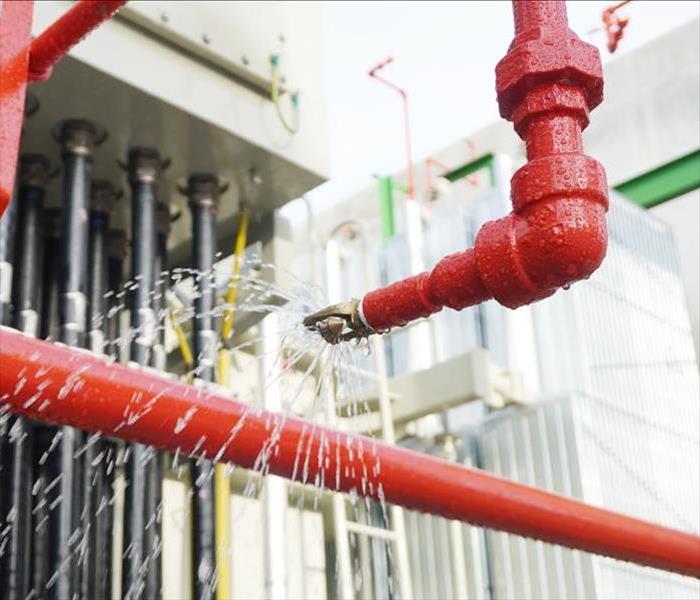 Investing in high-quality fire safety equipment is a proactive measure that can save businesses from significant losses.
Investing in high-quality fire safety equipment is a proactive measure that can save businesses from significant losses.
As a home or property owner, protecting your investment is paramount. However, for businesses, the stakes are even higher. A fire incident can have devastating consequences, leading to significant revenue loss, property damage, and potential disruption of operations. In this blog, we will explore essential fire risk factors that businesses should be aware of to prevent revenue loss and secure their future.
1. Electrical Hazards
One of the leading causes of commercial fires is electrical hazards. Overloaded circuits, faulty wiring, and electrical equipment malfunctions can spark fires without warning. Business owners should ensure that their electrical systems are up-to-date and compliant with safety regulations. Regular inspections by certified electricians can help identify potential hazards and prevent revenue loss due to electrical fires.
2. Fire Safety Equipment
Investing in high-quality fire safety equipment is a proactive measure that can save businesses from significant losses. Fire extinguishers, smoke detectors, sprinkler systems, and fire alarms are indispensable tools in mitigating fire damage. Regular maintenance and testing of these systems are crucial to ensure their effectiveness during emergencies.
3. Human Error
Human error is an unfortunate but common factor contributing to commercial fires. Employees' awareness of fire safety protocols is vital for preventing accidents. Conducting regular fire safety training, evacuation drills, and providing clear instructions on how to handle potential fire hazards can significantly reduce the risk of fire incidents.
4. Flammable Materials and Chemicals
Many businesses deal with flammable materials and chemicals, which can pose a serious fire risk if mishandled or stored improperly. It's essential for business owners to establish strict protocols for the storage and handling of such materials. Ensuring proper ventilation, fire-resistant storage containers, and staff training in handling hazardous substances are crucial steps to avoid revenue loss from fire damage.
5. HVAC Systems
HVAC systems, if not properly maintained, can become fire hazards. Dust accumulation, electrical malfunctions, and overheating components can lead to fire outbreaks. Regular inspections and maintenance of HVAC systems can prevent fire incidents and protect businesses from revenue loss.
6. Arson and Vandalism
Unfortunately, businesses are not immune to intentional acts of arson and vandalism. Adequate security measures, such as surveillance cameras, security patrols, and well-lit premises, can deter potential arsonists and vandals, safeguarding the business from intentional fire damage.
7. Smoking Policies
If your business allows smoking on the premises, enforcing strict smoking policies is crucial. Carelessly discarded cigarette butts can easily ignite fires, leading to devastating consequences. Designated smoking areas with fire-resistant receptacles should be established to reduce the risk of fire incidents.
Preventing revenue loss due to fire damage requires vigilance, proactive measures, and a commitment to fire safety. By identifying and addressing the fire risk factors mentioned in this article, businesses can significantly reduce the likelihood of fire incidents. Implementing a comprehensive fire safety plan, investing in quality fire safety equipment, and providing staff training can go a long way in protecting your business and securing its future. Remember, preparedness is key to minimizing potential losses and ensuring the safety of your business and all its stakeholders.
7 Essential Steps to File an Insurance Claim After a Home Fire
4/13/2023 (Permalink)
 Filing an insurance claim is one of the essential steps you need to take after a fire.
Filing an insurance claim is one of the essential steps you need to take after a fire.
Experiencing a home fire can be an overwhelming and devastating event, leaving you with damages that require a lot of time and money to restore. This is where having a comprehensive insurance policy comes in. Filing an insurance claim is one of the essential steps you need to take after a fire to recover some of the losses. In this blog, we'll go over the steps to take when filing an insurance claim after a home fire.
Contact Your Insurance Company
The first thing you should do after a fire is to contact your insurance company. Your insurer will assign a claim adjuster who will help you through the claims process. Provide them with the necessary information, including the date of the fire, the extent of damage, and your policy number.
Document the Damage
Documenting the damage caused by the fire is a crucial step in the claims process. Take photos and videos of the damaged property and inventory, including any valuable items that may have been lost in the fire. This documentation will help your insurer to determine the extent of the damage and provide the necessary compensation.
Make Temporary Repairs
Make temporary repairs to your home to prevent further damage. Cover any holes in the roof or walls and board up broken windows or doors. These temporary repairs will help protect your property and prevent any further damage from occurring.
Obtain Repair Estimates
Obtain repair estimates from licensed contractors or restoration companies. These estimates should cover the costs of repairing and restoring your property, including any structural damage, water damage, or smoke damage.
Review Your Policy
Review your insurance policy to understand the coverage you have and the limits of your policy. Knowing your policy will help you understand what expenses are covered and the amount of compensation you can expect to receive.
Submit Your Claim
Submit your insurance claim to your insurer along with all the necessary documentation, including the repair estimates and any receipts for temporary repairs. Your insurance company will then review the claim and provide compensation based on the policy coverage.
Follow-Up on Your Claim
Follow up with your insurer to ensure that your claim is being processed and that you receive compensation promptly. Keep track of all communication with your insurance company, including any phone calls or emails.
In conclusion, filing an insurance claim after a home fire can be a complicated and stressful process. However, by following these steps and working with your insurance company, you can recover some of the losses and restore your property back to its original condition. Remember to document the damage, make temporary repairs, obtain repair estimates, review your policy, submit your claim, and follow up with your insurer. With patience and persistence, you can successfully file an insurance claim and restore your home after a fire.
The Best Fire-Extinguishing Method
12/28/2022 (Permalink)
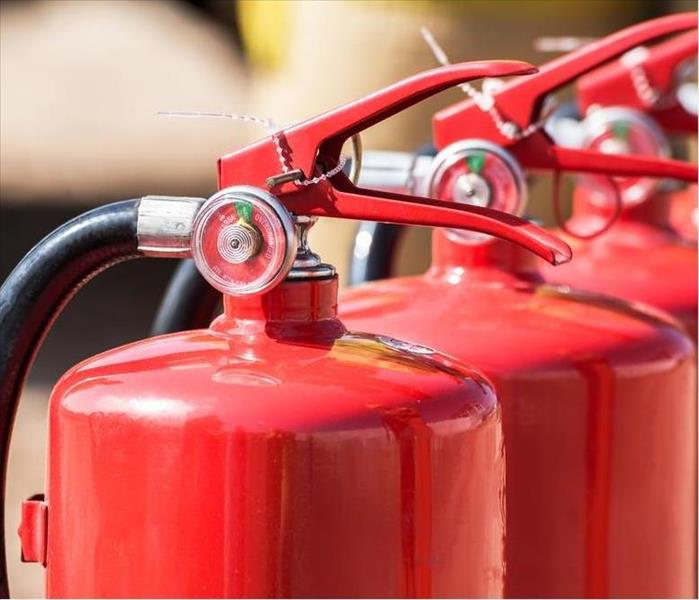 Know how to put out a fire with a fire extinguisher
Know how to put out a fire with a fire extinguisher
The Best Fire-Extinguishing Method
Although fire extinguishers are designed to put out fires, it is important that you know how to use them effectively. Knowing which type of fire extinguisher will work best for your situation is also important. Below you will find the most common types of fire extinguishers, as well as instructions on how they can be used.
Know the Fire Type
While it’s easy to think of fire extinguishers as a catchall solution for all types of fires, they are actually only effective for certain types of fires. So knowing the type of fire you are dealing with is critical.
Fire Extinguisher Class A
Extinguisher Class A is used for ordinary combustibles, such as paper and wood. This is the most common type of fire extinguisher and can be found in a majority of homes.
Fire Extinguisher Class B
Extinguisher Class B is used for flammable liquids, such as gas or oil. It's important to know that you should never use water on this type of fire because it will spread the liquid further. Instead, use foam or dry chemical extinguishers designed specifically for class B fires.
Fire Extinguisher Class C
Extinguisher Class C is used for electrical fires (including fires caused by lightning strikes). This type of extinguisher contains a conductive material that makes it safe to use around electricity without shocking yourself when discharged onto an electrical source or wire that has shorted out due to an electrical malfunction or lightning strike nearby your home
Fire Extinguisher Class D
A D-class fire extinguisher is used on fires involving combustible metals, such as lithium, potassium, sodium, and magnesium. It also works on fires involving flammable metals like zinc and aluminum.
A common mistake that people make with these types of fires is trying to smother them with a blanket or similar object. This will only make the situation worse; covering the material can cause it to explode violently and propel shrapnel at you or others nearby. Instead of attempting to prevent oxygen from reaching your metal fire by cutting off its air supply (which doesn't really work anyway), spray it down with an appropriate amount of water using a hose or bucket until all visible flames have been extinguished. Once you've killed off the flames in your metal fire's immediate vicinity, check for any embers still burning before leaving; if there are any leftovers they can reignite once exposed again so stay vigilant!
Fire Extinguisher Class K
Class K fire extinguishers are designed for use on grease fires. They should not be used on electrical fires or burning liquids. The best way to put out a kitchen grease fire is by smothering it with baking soda and water, which you can find in the cabinet above your stove.
If you are ever faced with a fire, having the right tools to extinguish it is important for your safety. You should know how to use a fire extinguisher correctly.
A fire can be caused by many things: electrical issues, smoking materials, and kitchen accidents are just some examples of ways that a fire starts. When you see smoke or notice flames in the home, keep calm and assess the situation. If there’s an exit nearby, get out immediately while calling 911 from a safe distance away from the house. If there isn't an exit nearby, make sure everyone knows what they're supposed to do if there's an emergency (i.e., get low on their hands so as not to cause burns when crawling under furniture).
If your home catches on fire, regardless of the reason, SERVPRO of Scarsdale/Mount Vernon can help restore your Scarsdale property to its original, preloss condition. Give us a call!
Tips for Filing a Renters Insurance Claim After a Fire
6/13/2022 (Permalink)
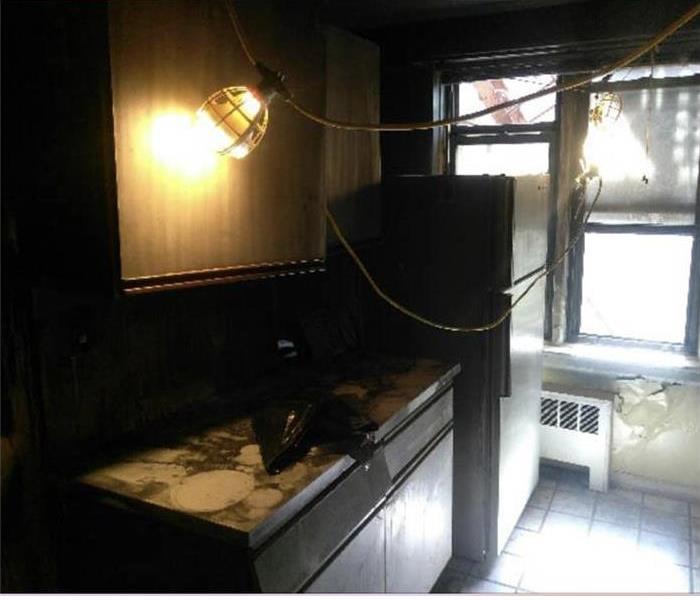 If you rent your home in Tuckahoe, NY, you need renters insurance to cover expenses in case of a fire or another covered peril.
If you rent your home in Tuckahoe, NY, you need renters insurance to cover expenses in case of a fire or another covered peril.
After a Fire, Here Are Some Tips for Filing a Renters Insurance Claim
If you rent your home in Tuckahoe, NY, you need renters insurance to cover expenses in case of a fire or another covered peril. Most tenants don't know how far those benefits reach, though. When filing your claim after a fire, be sure to include the following costs, if applicable to your circumstances.
Fire Damage to Belongings
One document you should prepare before you file your claim is an itemized list of belongings damaged by the fire and how much it costs to replace them. Your policy should cover all your personal property:
- Furniture
- Electronics
- Clothing
- Food
- Valuables
You may be surprised how many items fire restoration experts can repair. If they cannot be fixed, however, your provider should recoup the replacement cost rather than the depreciated value of the items.
Limited Liability
A fire can break out in your apartment due to your negligence. If this happens, the liability clause in your renters' insurance policy is likely to come into play. This protects you in the event that a third party has damages due to anything you did that led to the fire.
Medical Expenses
Even if you do everything right, it is still possible that someone can get injured when fleeing the burning building. Most policies for renters can cover medical expenses to a certain extent. Check with your agent to see how much coverage an injured party can get.
Temporary Relocation
If there is a lot of damage to the structure of the rental property, it may take some time to repair. You will probably have to live somewhere else while it is mitigated. Your policy should cover the cost of the hotel room or other temporary accommodations.
You may not know a lot about your renters' insurance policy until you need to file a claim. Chances are good that it covers more than you expect.
3 Tips To Prevent a Dryer Fire
4/25/2022 (Permalink)
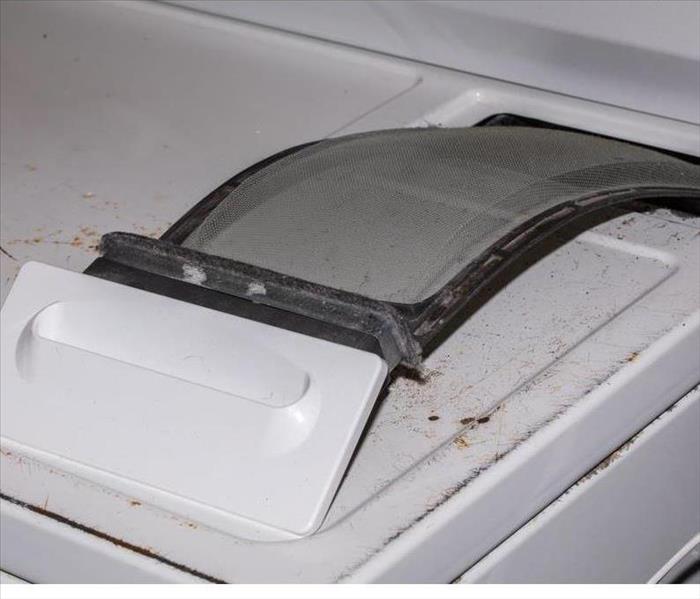 Make sure that birds, insects, or other animals do not build nests that could obstruct the exhaust vent. A clogged vent could lead to a lint fire.
Make sure that birds, insects, or other animals do not build nests that could obstruct the exhaust vent. A clogged vent could lead to a lint fire.
Three Ways To Avoid A Dryer Fire
If you’re like most people in Yonkers, NY, you probably use your clothes dryer at least a few times per week, but when was the last time you cleaned out your dryer’s exhaust vent? According to the U.S. Fire Administration, clothes dryers cause approximately 2,900 home fires each year. The top cause of those fires is excessive lint buildup due to inadequate cleaning. Follow these tips to keep your dryer in good condition and reduce your risk of a lint fire.
1. Keep Up With Regular Dryer Maintenance
Make sure to clean your dryer’s lint filter every time you use the dryer. Every three months or so, remove any built-up lint from the back of the dryer and clean out any that has accumulated in the vent pipe. Twice a year, brush the filter thoroughly with a nylon brush to remove difficult lint fibers.
2. Remember To Check Your Outside Dryer Exhaust Vent
Nearly all dryers are required to vent to the outside of your house. Keep a cover on the outside vent opening to keep dirt and rain from entering the vent. Check the cover occasionally to be sure it opens fully when the dryer is running. Make sure that birds, insects, or other animals do not build nests that could obstruct the exhaust vent. A clogged vent could lead to a lint fire.
3. Call a Professional if Problems Arise
If you discover any unusual sounds or smells coming from your dryer or notice that your clothes are taking longer than usual to get dry, don’t wait for an inconvenience to develop into a major problem — or a dryer fire. Call a repair person who is licensed to work on your model of dryer. The cost to repair your dryer correctly will almost certainly be less than the fire cleanup costs after a home fire caused by a malfunctioning dryer.
Following these tips requires a small investment of time and energy. However, preventing a lint fire from destroying your home is well worth the extra effort.
3 Common Causes of a Lint Fire in Your Dryer
3/7/2022 (Permalink)
 Contact your local fire damage restoration service if there has been a fire in your home due to lint. Contact SERVPRO, we are ready to help you!
Contact your local fire damage restoration service if there has been a fire in your home due to lint. Contact SERVPRO, we are ready to help you!
The 3 Most Common Causes Of A Dryer Lint Fire
Homeowners in Mount Vernon, NY, whose dryers are no longer functioning, should think twice before purchasing a new appliance. Lint buildup is a common cause of a malfunctioning dryer. It is also a lint fire hazard that may go unnoticed for years. Lint can accumulate in places where it is hard to spot, such as:
- Dryer vents
- Inside the dryer
- Behind the dryer
Lint is made up of small thread particles, such as wool or cotton, that easily combust. These three common causes of a dryer fire should be prevented.
1. Failure to Maintain the Dryer Vent
Experts recommend that you service your dryer at least once a year to prevent a lint fire. Fluff and fuzz can fill the exhaust hose and dryer vent. An appliance that no longer dries your clothes is a sign that the vent is clogged. When the lint has no exit, it will eventually fill the vent until it has no other escape except into your home.
2. Lint Inside the Dryer
You should clean your lint filter before and after each use of your dryer. Lint is visible on the filter but can hide inside of the dryer as well. When you remove the filter, peer inside of the housing to make sure no fluff is left behind. If you see buildup inside of the filter housing, clean it thoroughly with a vacuum cleaner to prevent a dryer fire.
3. Lint Behind the Dryer
Lint hidden behind the dryer is a sign that the vent needs to be cleaned. Any spark near the lint can cause a house fire. To prevent this, clean behind your dryer regularly to keep lint buildup at a minimum. Then, contact a professional to service your dryer annually.
Contact your local fire damage restoration service if there has been a fire in your home due to lint. Taking preventative measures, such as yearly dryer maintenance, will keep your house safe from a lint fire.

 24/7 Emergency Service
24/7 Emergency Service






